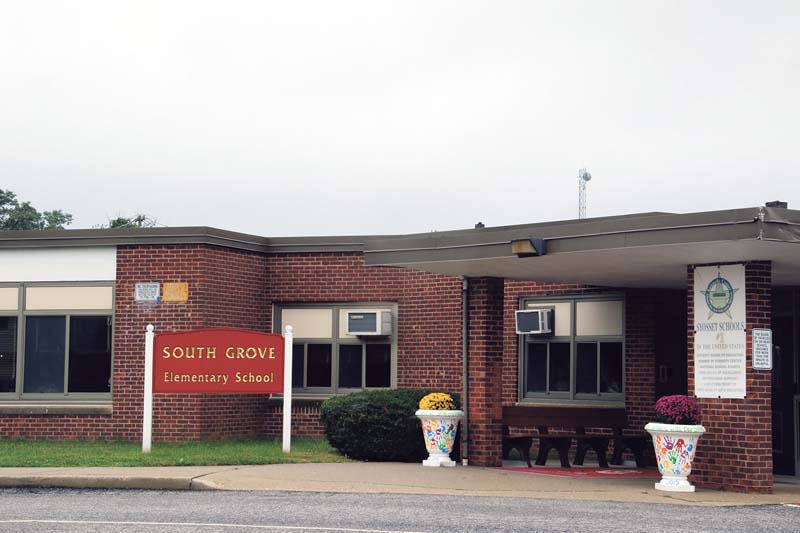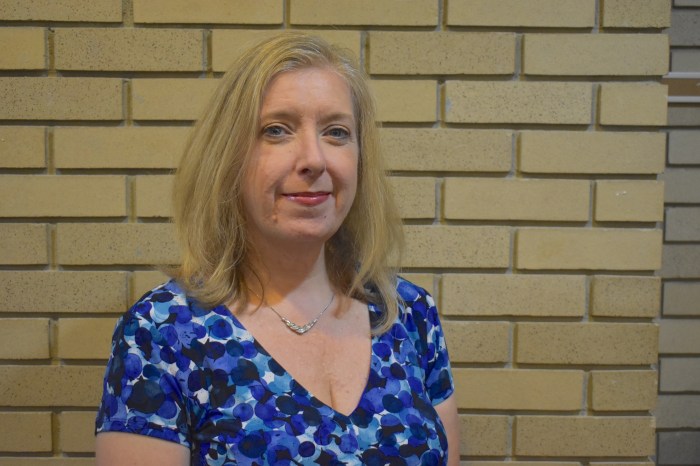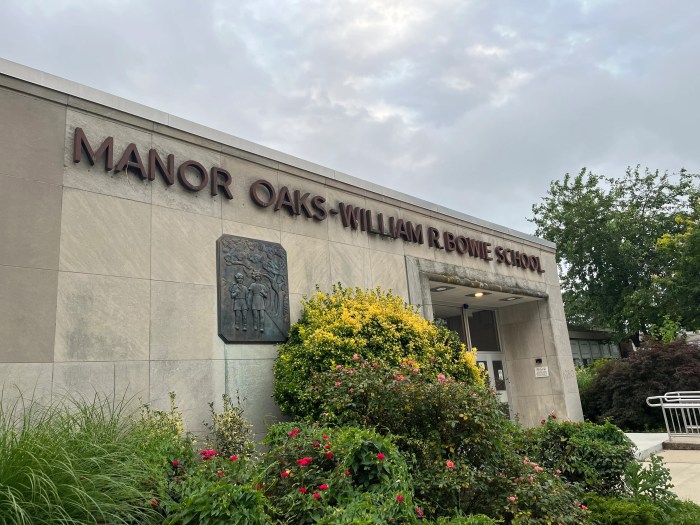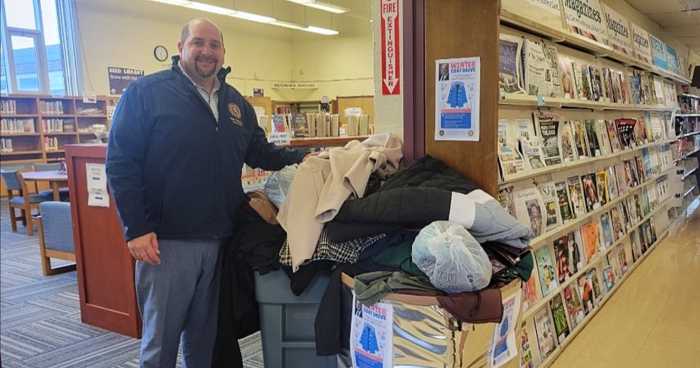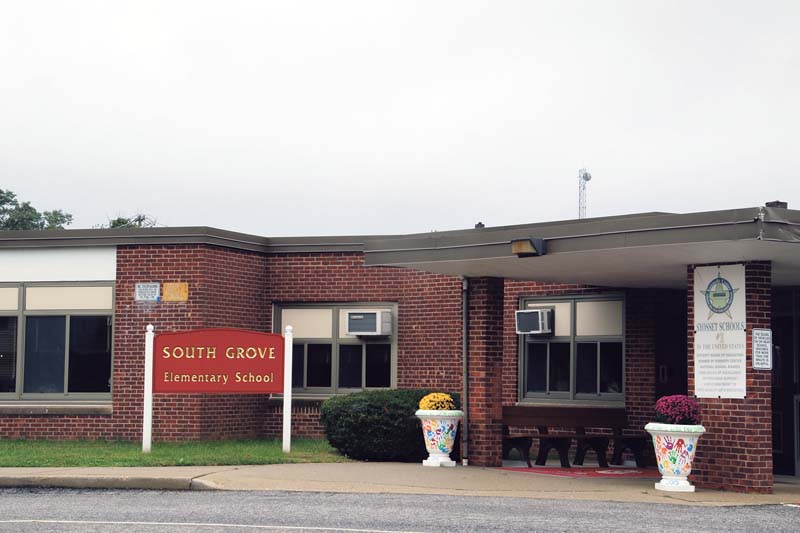
A proposed project that covers nearly 93 acres is sure to be impactful.
Especially as it occupies two former Superfund sites and is adjacent to a school, the Long Island Expressway, busy thoroughfares and built-up residential areas.
The school in question is South Grove Elementary, and the Syosset Central School District has been worried about how construction activities and 1,600 estimated new residents introduced by the Syosset Park mixed-use project would affect the school in particular and the district in general.
The district therefore hired Walden Environmental Engineers of Oyster Bay to study the 2,000 pages that comprise the project’s Draft Environmental Impact Statement (DEIS).
Walden’s Joseph Heaney and Nora Brew presented their critiques of the DEIS at the Aug. 28 special meeting of the Syosset Central School Board of Education (BOE). At the district’s request, the Town of Oyster Bay, which is the lead environmental agency for the project and has the power of approval, agreed to extend the public comments on the DEIS to Aug. 31. The meeting in part allowed the district to summarize its response to the plan.
After hearing the two professional engineers and looking through the nearly 200-page response they had prepared, BOE member Rob Gershon asked, “There’s hundreds of concerns here…how is it that they’re going to address and remediate them?”
In these type of projects, replied Brew, “The developer is going to go for a pie-in-the-sky ultimate development. I can’t see the town saying, ‘You’re good to go.’ There’s going to be negotiations.”
She added that the DEIS seemed thorough at first glance, “but after a deep dive there are things that come up that have to be much more closely evaluated.”
Trustee Andrew Feldman also cited the list of deficiencies, then asked the engineers, “You’ve been doing this a long time. It seems like there’s no consideration here for the safety of our students and our staff or residents. In your experience, is it common to have a DEIS with [so many concerns]?”
“I would very much say so,” Heaney replied. “This is typically the process in which the plans get negotiated—in public, in private documents, with public participation [and input]. It’s the intention of the rules so that everyone who’s a stakeholder has an opportunity to comment.”
He added, “The pendulum is in [the developer’s] court to start, then starts to swing to some equilibrium point in the middle. I’m not suggesting that this is a good idea or bad idea. I’m saying this is the process we’ve seen.”
Heaney referred to then-Islanders owner Charles Wang’s aborted Lighthouse project at the Nassau Coliseum Hub. There was a proposed 60-story building, which of course was never built. The entire project was eventually scrapped.
“That was the opening salvo,” Heaney said of the skyscraper.
Air And Soil
According to the minutes of the meeting, “The engineers determined the DEIS provided insufficient information to evaluate vital construction practices including the following: Community Air Monitoring Plan; Stormwater Pollution Prevention Plan [and] Erosion and Sediment Control Plan.”
Heaney and Brew talked at length about the DEIS’s shortcomings, including, “Establishment of an adequate buffer between the construction area and South Grove Elementary School; a construction schedule that would not interrupt outdoor recreation time; how the existing landfill monitoring wells and gas vent wells would be integrated into the new landscape while still remaining accessible for inspections and monitoring; sufficient parking at South Grove as facilities expand to accommodate the influx of students; how rodents/vectors displaced during development would be dealt with…”
Heaney said that his firm is concerned about the integrity of the cap during the construction process and “how they’ll handle excavation and handling the materials that haven’t been sampled and may never be sampled until they are excavated. I read that 127,000 [cubic yards] of material will be moved off the property. Roughly that’s 4,000 truckloads—and that could be a lot of traffic.”
Walden’s letter to Superintendent Thomas Rogers stated: “The major release pathways for the contaminants of concern that pose a threat to South Grove School are migration from the site in dust/air and stormwater.”
The DEIS, read a slide that flashed during the Aug. 28 presentation, “fails to adequately ensure that the South Grove School and Syosset community will be safe during construction.”
Heaney also noted that if Oyster Bay makes the zoning changes and approves the housing density sought by the developer, it will create a precedent where the town might be forced into giving other developers the same permissions.
BOE member Christopher DiFilippo asked a question about the landfill cap, wondering how exactly it covered the affected area.
Heaney likened it to an umbrella.
DiFilippo asked if it was possible for rainwater to infiltrate around the sides, finding the toxic material under the cap and end up leaching contaminants into the groundwater. He also wondered if the lining might be damaged in places, admitting water.
Brew said the landfill cap, if it was properly placed, channels water over the edges and away from landfill proper. The runoff is then directed into a recharge basin.
“The issue of water getting into the landfill material is not a concern,” she concluded.
Heaney observed, “Would there be any indication that the landfill is leaking or leeching? There is regular maintenance inspection of the landfill currently. Once a year, there is a detailed inspection of what it looks like over there. And as I’ve mentioned, the landfill, over time, will settle, and then it will have to be reshaped.”
In its agreement with the EPA, the town has to monitor groundwater wells at the landfill, and so far tests have not shown elevated levels of contaminant materials, which would be the case if there was a leak, Heaney pointed out.
According to the meeting minutes, BOE President Dr. Michael Cohen “stated [that] there was a litany of things poorly addressed by the developer within the DEIS. The board’s first commitment is to the children in the district and the staff in schools. The issues raised are too insurmountable and therefore the board maintains its opposition originally stated in May 2018…. The board directed the superintendent to submit comments in opposition to the proposed project.”




